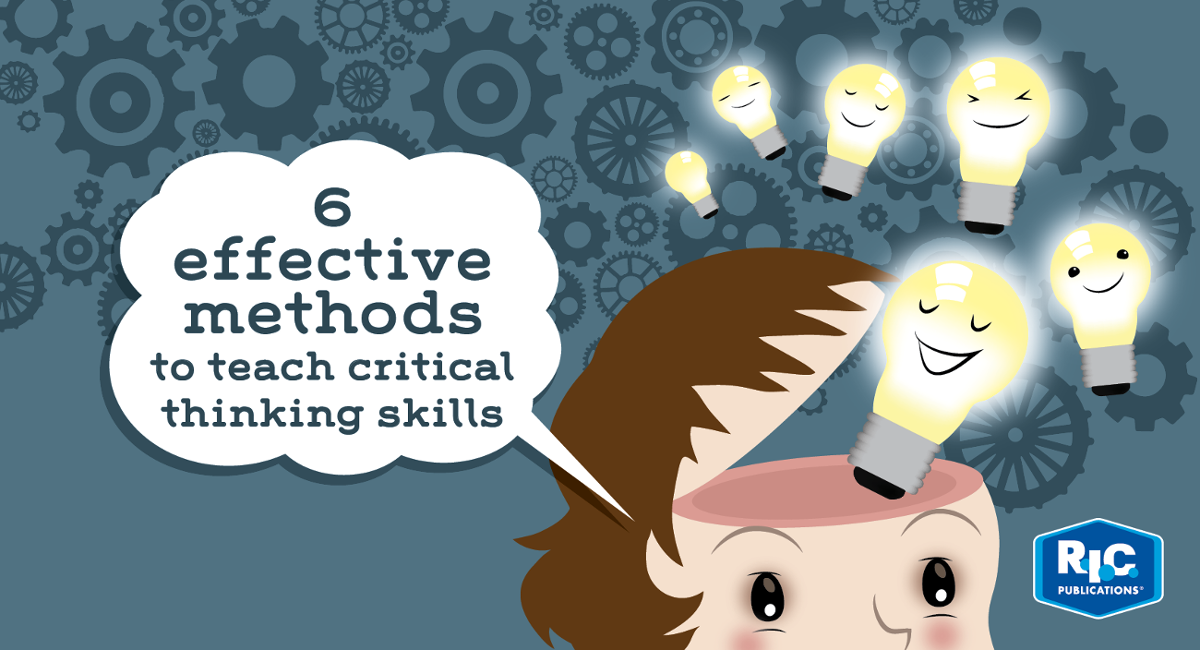- Thursday 13 June 2019
- 0 Comments
Teaching children critical thinking and problem-solving skills is one goal that every parent, teacher or caregiver must attain. This is imperative to prepare children for the challenges they will inevitably encounter day-to-day; the ability to think independently is essential for them to be able to face these challenges head-on.
While these skills are essential for participation in daily tasks as adults, they are also critical for students to develop during their schooling years to help them problem-solve, manage and cope with challenges/situations they encounter in academic, social and physical contexts.
The earlier these skills are taught, practised and reinforced, the more effective students will be at independently selecting, implementing and developing these skills.
Let's look at six effective methods to teach critical thinking skills:
1. Give children age-appropriate (or development-appropriate) puzzles to solve
Solving puzzles is a great way to encourage critical thinking in students of all ages. Those who are working on puzzles are challenged to put the right pieces in the corresponding areas. By simply participating in these activities, children are using and developing their problem-solving skills.
2. Start a 'Question of the day' routine
One of the best things for teachers and homeschooling parents to do is to establish a routine that involves asking a thought-provoking ‘question of the day’. Give children a notebook which will be their 'answer journal'. The question should be asked first thing in the morning, with children being allowed to write their answers in their journals. Near the end of the day, a discussion about the question should take place.
3. Utilise the 'why' five times strategy
Whenever kids are asked 'why' about anything, they are required to think of an answer, which encourages them to delve deeper to come up with that answer. Asking 'why' five times encourages students to take each answer a step further.
4. Encourage children to play board games that help develop critical thinking skills
Depending on the child's age and development, children should play board games or any type of game that will help with the development of critical thinking and problem-solving skills. For instance, chess is an excellent game for advanced or more capable children to play that will foster those skills. Children that are younger or less capable may instead play games like 'Snakes and ladders'. Remember, the more often children play those games, the more advanced they will become in their critical-thinking abilities.
5. Enact a role-play
Role-playing is a great way to encourage critical thinking in children, and the best way to do is to come up with a scenario that is imaginary. This way, students will be forced to solve the issue.
6. Square out a 'Q and A' session
In order to keep encouraging children to exercise their critical-thinking skills, they must be asked questions on a regular basis that will force them to think in order to come up with an answer. The session can be held later on in the school day or during lunch. However, it is a good idea to ask the kids about five questions that they can answer in a group or individually. Be sure not to overwhelm them by asking them too many questions or questions that are beyond their current level. It is important to keep exercising the brain, but you don't want them to burn out, or that will defeat the purpose.
Now that you know six effective methods that will encourage critical thinking and problem-solving in children, how can you put this into practice?
R.I.C. Publications has just released a six-book series for Higher-order thinking skills. Through a range of engaging and challenging activities designed to test and strengthen problem-solving skills, this resource helps students make deeper connections by integrating their learning across key curriculum areas.
Click on the image below or the link here to get started with a free sample unit from each level: series/higher-order-thinking-skills/

